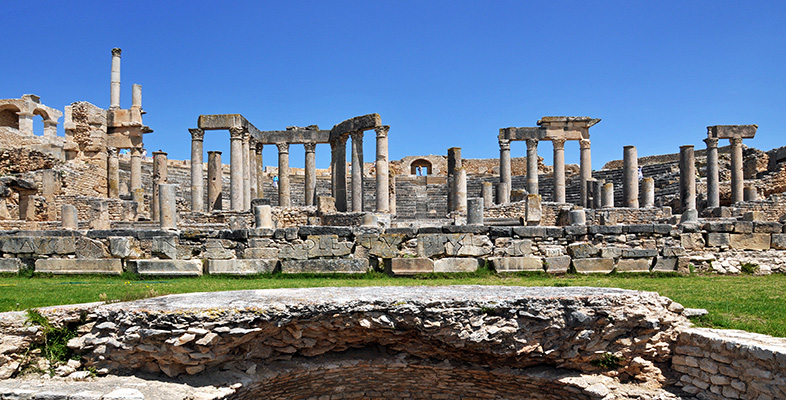2.7.4 Houses
In the case of the houses it is more difficult to differentiate clearly between ‘Roman’ and ‘African’ if we accept that the atrium-peristyle house is not the only form of dwelling we can identify as typically Roman. Nevertheless, it seems that the houses in Africa do represent a fusion of elements – African, Roman and Hellenistic – suggesting that model 4 might be most appropriate in the case of the houses at Bulla Regia. They combine a Roman symmetry with a Hellenistic peristyle and an African sunken court decorated with mosaics. Overall it seems very much as if we are studying a fusion of cultural elements which came together to create a vibrant culture. Furthermore, the houses seem to function in a similar social way as a setting for the display of wealth, education and status.
There are other areas of cultural interaction which we have not considered, and various of the models may be appropriate in different cases. So, for example, Latin became the official language of administration and commemoration on stone, suggesting that model 1 would fit best, whereas sporadic rebellions indicate that some aspects of Roman culture were actively rejected, suggesting model 2 might be more appropriate in some areas. The evidence we have just considered can be interpreted with reference to our four models of cultural interaction, but it should be clear that in individual cases and all the cases together the models do not fit exactly nor do they fully explain the evidence. What is more they are not necessarily mutually exclusive: that is to say, more than one of them may be seen to apply to the same evidence, either at the same time or following from each other. This is due partly to the simplicity of the models but also to the fact that the original premise – that there is something we can identify as African and something we can identify as Roman which we can compare and contrast – was itself a polarisation of the issues. The Roman world was very diverse and contained a broad range of experiences. Just as the concept of ‘Roman’ is multi-faceted and variable, so is the concept of ‘African’. When the two come together it is perhaps not surprising that the resulting cultural mix is rich and complex.
